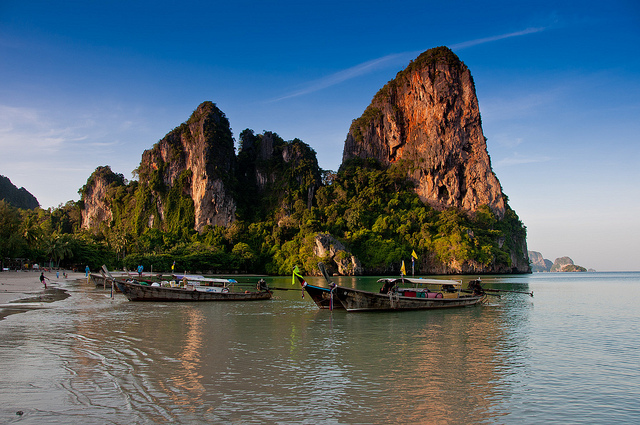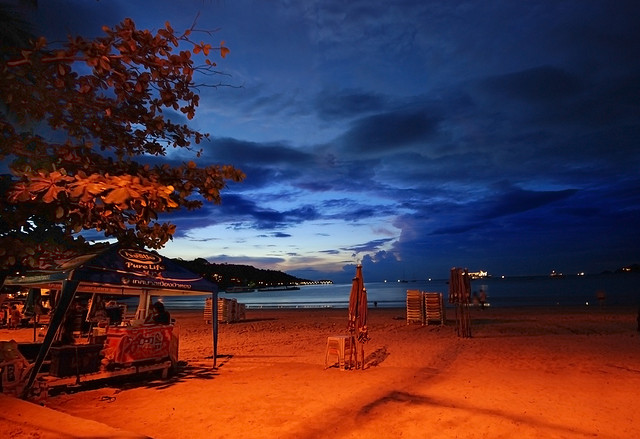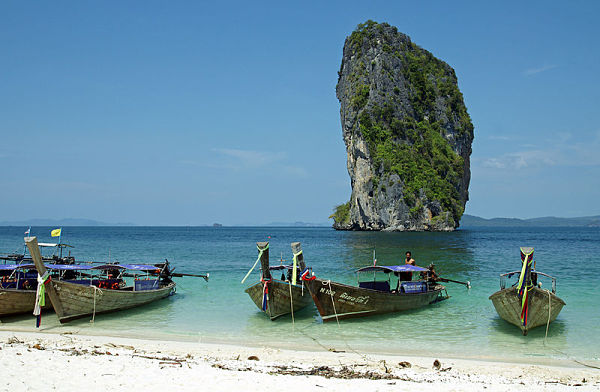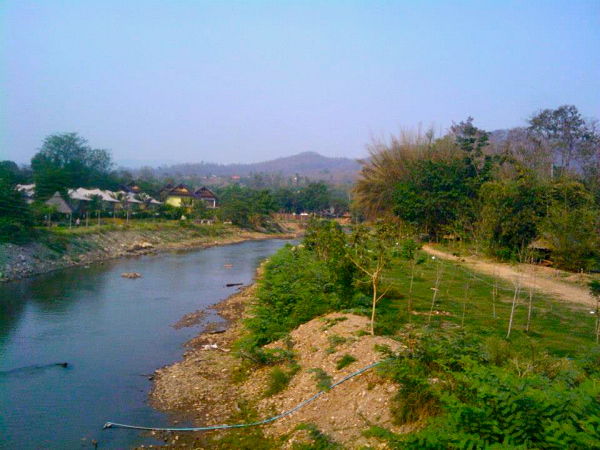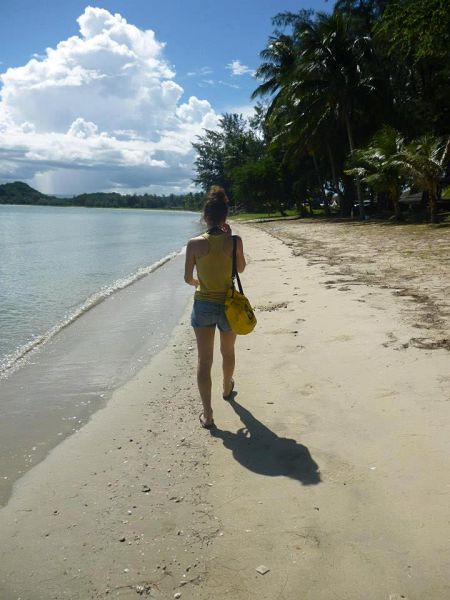Getting around Thailand can sometimes be tricky, as a combination of conveyances may be necessary to get from the city to the outskirts, and from the outskirts to the really remote villages. Thailand has its share of iconic transport characters that define the country much as it defines Southeast Asia in general and its people’s ability to stretch their limited resources to sometime remarkable extent. Below is a collection of modes of transport around Thailand that are amusing (if you are used to the fuel-efficient, magnet-powered transport in the West) and plain resourceful, both in how they are adapted to certain situations, and how little things are stretched so they go a long way.
Meaning “two benches,” “song-tee-ow” is an adapted pick-up fitted with two benches facing each other so it converts into a passenger vehicle and become a shared taxi. In Thailand, songthaews transport passengers in the city along shorter distances compared to longer routes offered by proper buses.
In rural areas, songthaews could seat more than 8 especially if transport is scarce. It is even necessary to fill the songthaew to the rafters, a practice popular in rural Philippines as “top-loading,” not because the driver wants to, but because passengers are often willing to risk life or limb to get to where they need to go.
Scooters are increasingly becoming popular modes of transport for single backpackers or a couple on vacation. They are easily rented and operated, consume reasonable amount of fuel, navigable even in tight situations, and bring you wherever you wish as long as you are willing to brace the difficulties of in-your-face travel on dirt roads with potholes the size of serious craters.
In Thailand as it is in most of Southeast Asia, overloading is often necessary because of circumstances despite the reality that road mishaps and severe injuries may result from demanding more capacity from vehicles not clearly designed for heavy duty. This scene is as true in Thailand as it is in the Philippines, where the local “habal-habal” sometimes even dares to carry squealing livestock, sacks of rice and squirming children.
To the Western eye, a child put out front of a wheeled conveyance is begging for an accident. It does not exactly look safe anywhere you look at it, but a child basket is a nifty way to carry not only groceries but also young children who cannot be left behind at home especially in areas that are not crowded or populated with suicidal drivers. It’s energy-efficient, too, despite not being so child friendly.
Bicycle rickshaws are characteristically Southeast Asian. The Filipinos call it “padyak,” the Vietnamese call it “cyclo”, the Malaysian and Indonesian, “becak.” Whichever way you look at it, bicycle rickshaws display the region’s ingenuity and resourcefulness, especially as it applies to eking out a livelihood in the bustling corners of capital cities.
“Tuktuks” are characteristically Thai (although similar versions can be found in India). These motorized pedicabs are as much a cultural part of Bangkok as it is a staple of its highways.
Elephants are another iconic symbol of Thai culture. Traditionally employed as log carriers in the thick forests of Northern Thailand, elephants have been reduced to transporters and entertainers that perpetuate their alleged abuse by their “mahouts.” Nowadays, elephants are heavily utilized in the tourist trade, a practice that should be put to end if only to save these gentle beasts the suffering that usually comes after their service life has ended.
